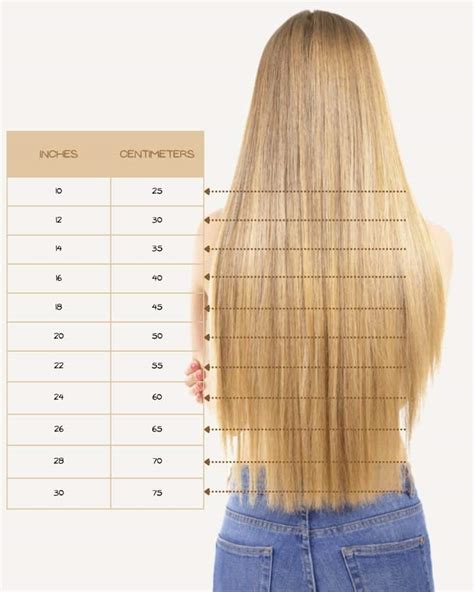Understanding the Hair Inch Chart
The hair inch chart is a valuable tool for anyone who wants to track the growth of their hair or determine the length they need for a specific hairstyle. By measuring your hair’s length in inches, you can accurately calculate how much longer it needs to grow to reach your desired length or how much to cut off to achieve a shorter style.

How to Measure Your Hair Length
To measure your hair length accurately, follow these steps:
- Start at the root. Place the end of a measuring tape at the base of your scalp where the hair grows from.
- Pull the tape straight down. Keep the tape taut and follow the natural curve of your hair as it falls.
- Read the number. The measurement in inches will be indicated on the measuring tape at the end of your hair.
Hair Length Chart for Different Hairstyles
The following table provides a general guideline for the hair length required for different hairstyles:
| Hairstyle | Length (inches) |
|---|---|
| Pixie Cut | 1-4 |
| Bob | 6-12 |
| Shoulder Length | 14-16 |
| Mid-Back Length | 18-22 |
| Waist Length | 24-28 |
| Hip Length | 30+ |
Hair Growth Rate and Factors Affecting It
The average hair growth rate is about 0.5 inches per month. However, this rate can vary depending on several factors, including:
- Age: Hair growth tends to slow down with age.
- Genetics: Some people are naturally predisposed to faster or slower hair growth.
- Hormones: Estrogen and testosterone can influence hair growth rate.
- Health: Conditions like alopecia, thyroid disorders, and malnutrition can affect hair growth.
- Diet: A healthy diet rich in vitamins and minerals can promote hair growth.
- Styling: Excessive heat styling and chemical treatments can damage hair and hinder growth.
Common Mistakes to Avoid When Measuring Hair Length
- Don’t measure wet hair: Wet hair stretches and can give you an inaccurate measurement.
- Don’t pull the tape too tightly: This can cause breakage and affect the accuracy of the measurement.
- Don’t measure from the ends: Always start from the base of the scalp for a precise measurement.
- Don’t round up or down: Use a measuring tape that allows you to read precise measurements.
Innovative Applications of Hair Inch Charts
Beyond measuring hair length, hair inch charts can be used for other creative applications:
- Yarn or Fabric Measurements: Use the chart to determine the amount of yarn or fabric needed for knitting, crocheting, or sewing projects.
- Plant Height Tracking: Track the height of plants by creating a chart based on their inch growth over time.
- Distance Estimation: Use the chart as a visual guide to estimate distances or object sizes in a pinch.
By understanding the hair inch chart and its various uses, you can gain better control over your hair growth and explore unique applications for this simple yet versatile tool.
